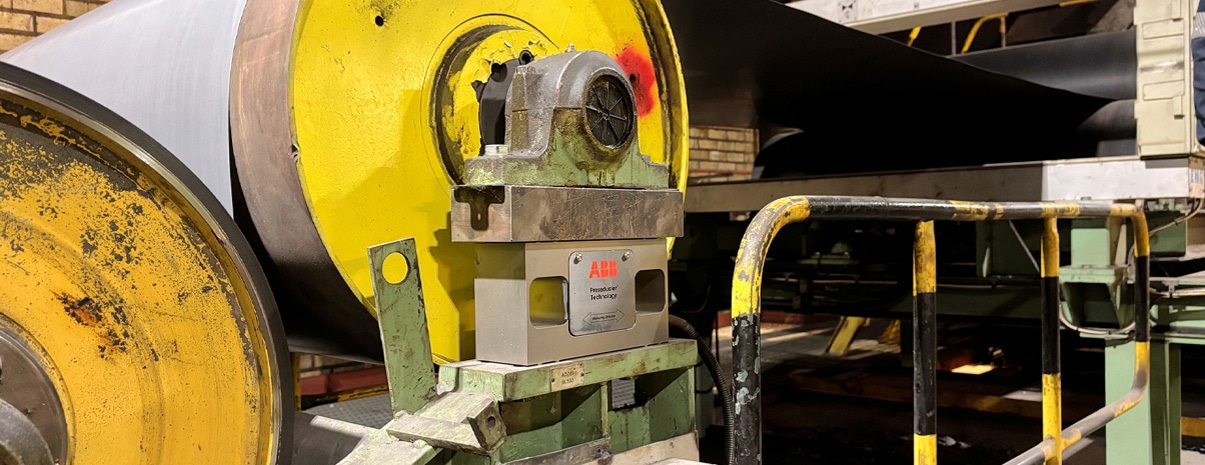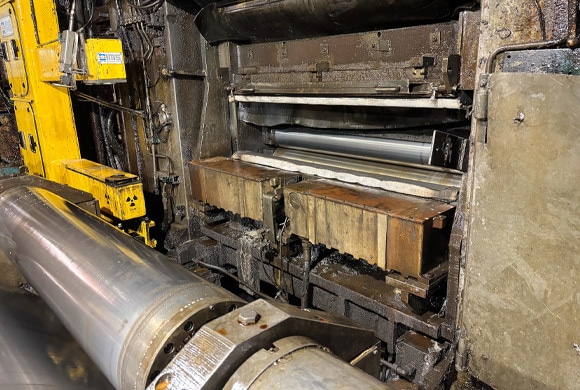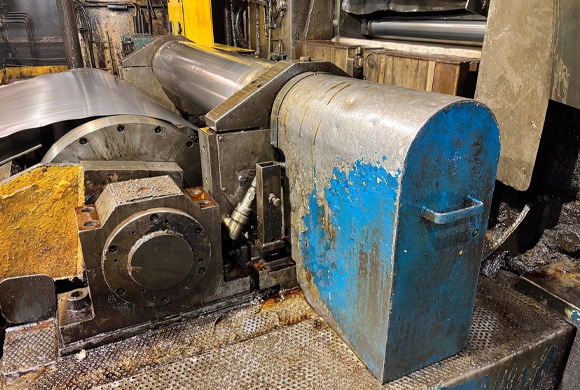As society shifts towards renewable energy sources, silicon steel is set to play an increasingly major role in ensuring our future energy security and sustainability.
Found in electrical motors, generators, transformers, power supplies, actuators, relays, solenoids, and other electromechanical devices, silicon steel is vital for the efficient generation, transmission, storage, and utilization of electrical power.
Based in Surahammar in Sweden and employing around 120 people, Surahammars Bruk is one of a few companies in the world that can produce ultra-thin electrical steel, with its products ranging from 0.1 to 1mm. Part of Tata Steel, the company has capacity for production of 50-60 kT of steel each year, with 90 percent being exported to Europe and Asia. Its customers include automotive manufacturers, producers of industrial motors and generators – including ABB – and companies producing domestic appliances such as vacuum cleaners.

Image Credit: ABB Inc.
Achieving the high product quality demanded by these customers is a challenging process which is complicated by the difficult nature of electrical steel, also known as silicon steel. The silicon added to the steel to enhance its electrical resistance and magnetic conductivity makes the resulting product hard and brittle, especially at low temperatures. As a result, silicon steel can be difficult to handle, with an increased risk of problems such as strip breaks that can incur production delays.
Throughout the production process, the steel is passed through a series of different stages where its properties are honed and refined to achieve the desired qualities demanded by customers. ABB’s Pressductors are used in two of these stages – the cold rolling mill and the continuous annealing and coating line.
Keeping control of flatness
The flatness of silicon steel is crucial for its performance as it directly influences the steel’s magnetic properties. This is especially important in electrical transformer applications because minimizing air gaps between adjacent layers of silicon steel boosts its performance by reducing undesirable eddy current losses.

Image Credit: ABB Inc.
In the 4-high cold rolling mill, the Pressductors are used as part of ABB’s Stressometer flatness measurement and control systems. Originally installed in 2000, these Stressometer systems, which are positioned on the entry and exit of the mill, ensure accurate control of the flatness of the steel to meet customer requirements.
This is achieved by using data from the Stressometers to control the actuators on the rollers, ensuring the correct amount of pressure is applied in response to any variations in the steel.
“The Stressometers play a key role in ensuring the flatness of the steel meets the demands of our customers,” says Lars Johannesson, Electrical Engineer for Surahammars Bruk. “Their robust design makes them ideal for handling the arduous nature of the cold rolling process and the brittleness of the silicon steel. If we didn’t have ABB’s Stressometers, the flatness measurement wouldn’t survive very long!”
Maintaining tension
Following the cold rolling mill, the steel is passed to the continuous annealing and coating process. During this process, the steel is subjected to a process of heating and cooling to increase its ductility and reduce stresses.
Situated before and after the 200-meter furnace, ABB’s Pressductor load cells ensure the tension of the steel is accurately maintained at a constant tension as it passes through.
“With temperatures of up to 1100 °C, it is important to ensure the correct tension is applied during the heating stage,” says Mats Åslund, Process Technology for Surahammars Bruk. “If the tension is too high or low, there is an increased risk of issues such as the material deforming or deviations in width and flatness that could impact on the final quality of the steel.”
A further stage in the process sees the steel being coated with an insulating varnish to reduce eddy current losses and prevent corrosion, after which it is then passed to a drying process to harden.
Once the coating process is complete, the steel is then passed through a series of extra stages, including quality control and slitting, before being packed for delivery to Surahammar’s customers.

Image Credit: ABB Inc.
Highly reliable performance
Celebrating its 70th anniversary, ABB’s Pressductor technology has proven highly reliable at Surahammars Bruk’s plant. Many of the Pressductor load cells at the plant have been in operation for 20 years or more, with no deterioration in their performance.
“ABB’s Pressductor load cells work very well and require very low maintenance compared to other measurement devices that require more calibration and maintenance,” says Harald Razpotnik, Manager Technical Service Electricity for Surahammars Bruk. “This is especially the case in our cold rolling mill where conditions mean that equipment has to withstand a lot of abuse.”